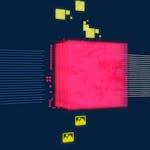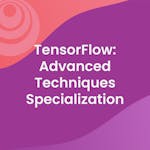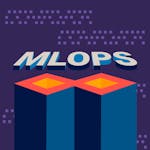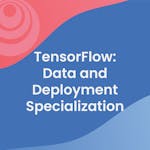TensorFlow Terms: A to Z Glossary
Interested in tensorflow but you keep seeing terms unfamiliar to you? This A-to-Z glossary defines key tensorflow terms you need to know.
TensorFlow professionals are actively engaged in developing, deploying, and maintaining machine learning and deep learning applications using the TensorFlow framework. They leverage TensorFlow's powerful programming APIs, libraries, and tools to build and train neural networks, handle large datasets, conduct model evaluation, and collaborate effectively with cross-functional teams. With TensorFlow's capabilities, they drive innovation in the field of artificial intelligence and deliver cutting-edge solutions to various real-world challenges.
This tensorflow glossary can be helpful if you want to get familiar with basic terms and advance your understanding of tensorflow.
TensorFlow Terms: A to Z Glossary
Interested in tensorflow but you keep seeing terms unfamiliar to you? This A-to-Z glossary defines key tensorflow terms you need to know.
TensorFlow professionals are actively engaged in developing, deploying, and maintaining machine learning and deep learning applications using the TensorFlow framework. They leverage TensorFlow's powerful programming APIs, libraries, and tools to build and train neural networks, handle large datasets, conduct model evaluation, and collaborate effectively with cross-functional teams. With TensorFlow's capabilities, they drive innovation in the field of artificial intelligence and deliver cutting-edge solutions to various real-world challenges.
This tensorflow glossary can be helpful if you want to get familiar with basic terms and advance your understanding of tensorflow.
TensorFlow Terms
API (Application Programming Interface)
An API in TensorFlow is a set of functions and protocols that allows developers to interact with and use the TensorFlow library in their applications.
Backpropagation
Backpropagation is an optimization algorithm used in training neural networks to update the model's weights based on the calculated gradients of the loss function concerning each weight.
Convolutional Neural Network (CNN)
A Convolutional Neural Network is a deep learning model used primarily for image recognition and processing tasks.
Data Flow Graph
A data flow graph is a computational graph used in TensorFlow to represent data flow between operations and tensors.
Estimator
An Estimator in TensorFlow is a high-level API that provides an interface for training and evaluating machine learning models.
Feature Columns
Feature columns in TensorFlow represent and preprocess input features for machine learning models.
Gradient Descent
Gradient descent is an optimization algorithm used to update the parameters of machine learning models during training.
Hub
TensorFlow Hub is a repository of pre-trained machine learning models that can be reused for various tasks.
Inference
Inference in TensorFlow refers to using a trained model to predict new, unseen data.
Join
Join in TensorFlow is an operation that combines elements from multiple tensors based on a specified condition.
Keras
Keras is a high-level API in TensorFlow that simplifies the process of building, training, and evaluating deep learning models.
Loss Function
A loss function in TensorFlow measures the difference between the predicted and actual target values and is used to optimize the model during training.
Model Checkpoint
A model checkpoint in TensorFlow is a saved version of the model during training, which allows resuming training from a specific point if necessary.
Neural Network
A neural network in TensorFlow is a computational model inspired by the structure and function of the human brain, used for various machine learning tasks.
Optimizer
An optimizer in TensorFlow is an algorithm that updates the model's parameters during training to minimize the loss function.
Placeholder
A placeholder in TensorFlow defines input nodes for the computational graph, allowing data to be fed into the model during training.
Queue
A queue in TensorFlow is a data structure used for managing input data for training, especially when dealing with large datasets.
Rank
In TensorFlow, the rank refers to the number of dimensions of a tensor.
Session
A session in TensorFlow is an environment for running operations and evaluating tensors in the computational graph.
Tensor
A tensor in TensorFlow is a multi-dimensional array used for representing data in the computational graph.
Unsupervised Learning
Unsupervised learning in TensorFlow involves training a model on unlabeled data to learn patterns and structures without explicit target labels.
Variable
A variable in TensorFlow is a type of tensor that can be modified during training.
Word Embedding
Word embedding in TensorFlow is a technique used to represent words as continuous vector representations in natural language processing tasks.
Zero Bias
Zero bias indicates that a machine learning model is not favoring any specific outcome or prediction, resulting in a balanced and unbiased learning process in TensorFlow.
Conclusion
Congratulations on completing the A-to-Z glossary of TensorFlow terms! By familiarizing yourself with these essential concepts, you can delve into the exciting world of TensorFlow and its wide-ranging applications. Whether embarking on your TensorFlow journey or aiming to deepen your expertise, this glossary will be an invaluable tool to enhance your proficiency and effectiveness in machine learning with TensorFlow. Happy learning, exploring, and creating with TensorFlow!
Learn in-demand tensorflow skills from industry leaders.
TensorFlow Courses | Deep Learning Courses | Machine Learning Courses | Neural Networks Courses | Artificial Intelligence Courses | Computer Vision Courses | NLP Courses | Keras Courses | Data Science Courses | PyTorch Courses | Reinforcement Learning Courses | Python Courses | Cloud Computing Courses
 Join a community of over 100 million learners from around the world
Join a community of over 100 million learners from around the world Learn from more than 200 leading universities and industry educators.
Learn from more than 200 leading universities and industry educators. 70% of all learners who have stated a career goal and completed a course report outcomes such as gaining confidence, improving work performance, or selecting a new career path.
70% of all learners who have stated a career goal and completed a course report outcomes such as gaining confidence, improving work performance, or selecting a new career path.- 100% online
- Flexible schedule
- Mobile learning
- Videos and readings from professors at world-renowned universities and industry leaders
- Practice quizzes
Can’t decide what is right for you?
Try the full learning experience for most courses free for 7 days.Register to learn with Coursera’s community of 87 million learners around the world






